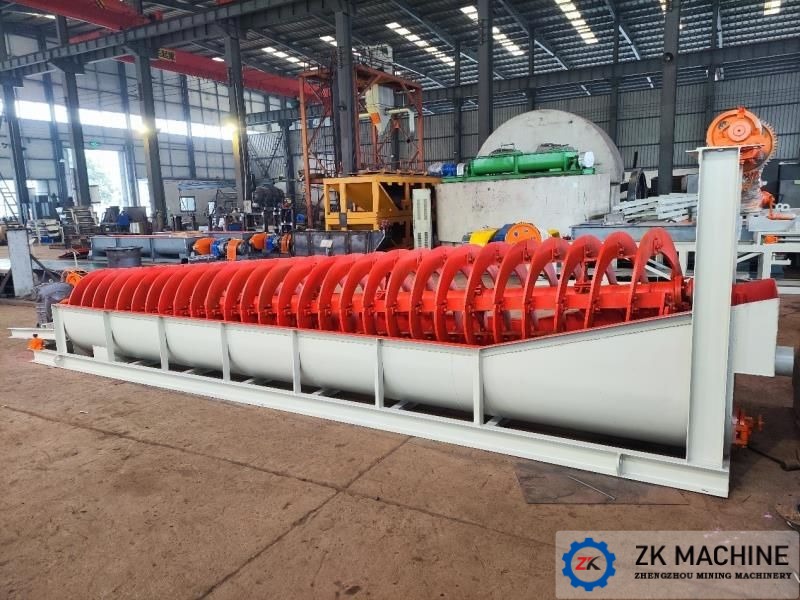- +8618937185591
- +8618937185591
- ec19@zkcorp.com
- +8618937185591


Spiral graders can be divided into single spiral and double spiral graders according to the number of spiral axes. According to the height of overflow weir, spiral graders can be divided into three types: high weir type, low weir type and sunk type.
The location of the overflow weir of the high Weir Spiral classifier is higher than the bearing Center at the lower end of the spiral shaft, but lower than the upper edge of the spiral at the overflow end. It has a certain settlement area, which is suitable for coarse grain classification and can obtain overflow granularity of more than 100 mesh.
The overflow weir of the low-Weir Spiral classifier is lower than the bearing center of the overflow end, so the settlement area is small and the overflow production capacity is low; It is usually not used for grading operation, but for washing ore for mud removal.
The whole spiral at the overflow end of the sunk Spiral classifier is immersed under the liquid level of the settlement area, and its settlement area has a larger area and depth, which is suitable for fine particle classification and can obtain overflow particle size less than 100 mesh.
So, how does the Spiral classifier work?
The ore pulp after fine grinding by The Spiral classifier is fed into the water tank from the feeding port located in the middle of the settlement area, and the lower end of the water tank installed with inclination angle is the graded settlement area of the ore pulp. The spiral rotates at a low speed to stir the pulp, making the light and fine particles suspended on the top and overflow at the overflow side Weir. After entering the next process, the heavy particles settle to the bottom of the groove and are sent to the discharge port by the spiral to discharge as the returning sand. Generally, the Spiral classifier forms a closed circuit with the mill, and the coarse sand is returned to the mill for re-grinding.
Spiral grading machine mainly consists of tank parts, spiral device, transmission device, lifting mechanism, etc.